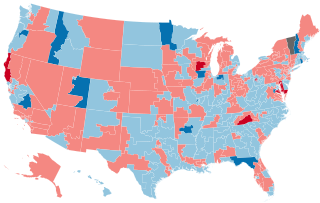
The 1990 United States House of Representatives elections was an election for the United States House of Representatives on November 6, 1990, to elect members to serve in the 102nd United States Congress. They occurred in the middle of President George H. W. Bush's term. As in most midterm elections, the president's Republican Party lost seats to the Democratic Party, slightly increasing the Democratic majority in the chamber. It was a rare instance, however, in which both major parties lost votes to third parties such as the Libertarian Party as well as independent candidates.

The 1912–13 United States Senate elections were held on various dates in various states. They were the last U.S. Senate elections before the ratification of the Seventeenth Amendment in 1913, establishing direct elections for all Senate seats. Senators had been primarily chosen by state legislatures. Senators were elected over a wide range of time throughout 1912 and 1913, and a seat may have been filled months late or remained vacant due to legislative deadlock. Some states elected their senators directly even before passage of Seventeenth Amendment. Oregon pioneered direct election and experimented with different measures over several years until it succeeded in 1907. Soon after, Nebraska followed suit and laid the foundation for other states to adopt measures reflecting the people's will. By 1912, as many as 29 states elected senators either as nominees of their party's primary or in conjunction with a general election.

The 2011 United States elections were held on Tuesday, November 8. This was an off-year election, in which the only seats up for election in the United States Congress were special elections. There were also four gubernatorial races, including a special election in West Virginia. There were also state legislative elections in four states and judicial elections in three states; as well as numerous citizen initiatives, mayoral races, and a variety of other local offices on the ballot.
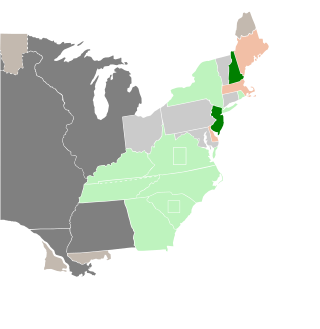
The 1804–05 United States Senate elections were held on various dates in various states. As these U.S. Senate elections were prior to the ratification of the Seventeenth Amendment in 1913, senators were chosen by state legislatures. Senators were elected over a wide range of time throughout 1804 and 1805, and a seat may have been filled months late or remained vacant due to legislative deadlock. In these elections, terms were up for the senators in Class 2.

The 1836–37 United States Senate elections were held on various dates in various states. As these U.S. Senate elections were prior to the ratification of the Seventeenth Amendment in 1913, senators were chosen by state legislatures. Senators were elected over a wide range of time throughout 1836 and 1837, and a seat may have been filled months late or remained vacant due to legislative deadlock. In these elections, terms were up for the senators in Class 3.

The 1794–95 United States Senate elections were held on various dates in various states. As these U.S. Senate elections were prior to the ratification of the Seventeenth Amendment in 1913, senators were chosen by state legislatures. Senators were elected over a wide range of time throughout 1794 and 1795, and a seat may have been filled months late or remained vacant due to legislative deadlock. In these elections, terms were up for the senators in Class 3.
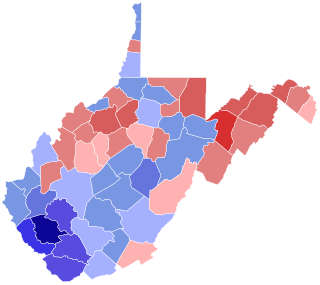
The 2011 West Virginia gubernatorial special election was a special election held on October 4, 2011, to fill the office of the West Virginia Governor, which became vacant upon the resignation of Joe Manchin, who resigned after he won a U.S. Senate special election. Lieutenant Governor and Senate President Earl Ray Tomblin, first in the line of succession to the governorship, subsequently became acting governor. On January 18, 2011, the West Virginia Supreme Court of Appeals ruled that a special election for the governorship must be held so a new governor can be in place by November 15, 2011, exactly one year after Manchin resigned. The primary election was held on May 14. Tomblin and Republican Bill Maloney won their respective primaries.
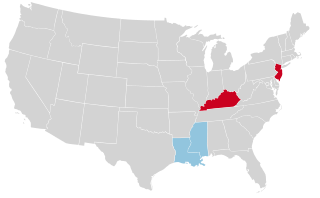
United States gubernatorial elections were held in 1943, in four states. Kentucky, Louisiana and Mississippi hold their gubernatorial elections in odd numbered years, every 4 years, preceding the United States presidential election year. New Jersey at this time held gubernatorial elections every 3 years, which it would abandon in 1949.

United States gubernatorial elections were held on 2 November 1937, in two states. Virginia holds its gubernatorial elections in odd numbered years, every 4 years, following the United States presidential election year. New Jersey at this time held gubernatorial elections every 3 years, which it would abandon in 1949. This marks the Democratic Party's largest gubernatorial extent in history and the largest for any party.

United States gubernatorial elections were held in 1931, in four states. Kentucky, Louisiana and Mississippi hold their gubernatorial elections in odd numbered years, every 4 years, preceding the United States presidential election year. New Jersey at this time held gubernatorial elections every 3 years. It would abandon this practice in 1949.

United States gubernatorial elections were held on 3 November 1925, in two states. Virginia holds its gubernatorial elections in odd numbered years, every 4 years, following the United States presidential election year. New Jersey at this time held gubernatorial elections every 3 years. It would abandon this practice in 1949.
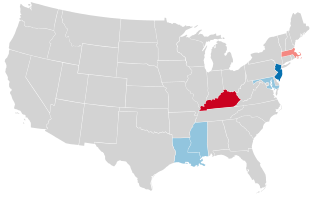
United States gubernatorial elections were held in 1919, in six states. Kentucky, Louisiana, Maryland and Mississippi held their gubernatorial elections in odd numbered years, every 4 years, preceding the United States presidential election year. New Jersey at this time held gubernatorial elections every 3 years. It would abandon this practice in 1949. This was the last time Massachusetts elected its governors to a single-year term. It switched to two-year terms from the 1920 election.

United States gubernatorial elections were held on November 6, 1917, in two states. Virginia holds its gubernatorial elections in odd numbered years, every 4 years, following the United States presidential election year. Massachusetts at this time held gubernatorial elections every year. It would abandon this practice in 1920.

United States gubernatorial elections were held in 1912, in 33 states, concurrent with the House, Senate elections and presidential election, on November 5, 1912. In addition, there was a special election in Georgia on January 10, 1912.
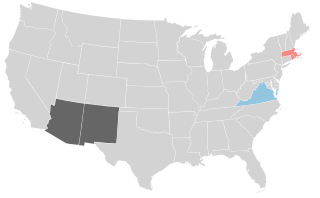
United States gubernatorial elections were held on November 2, 1909, in three states. Virginia holds its gubernatorial elections in odd numbered years, every 4 years, following the United States presidential election year. Massachusetts and Rhode Island at this time held gubernatorial elections every year. They would abandon this practice in 1920 and 1912, respectively.

United States gubernatorial elections were held in 1907, in eight states.

United States gubernatorial elections were held on November 5, 1901, in six states.

United States gubernatorial elections were held in 1899, in seven states.

United States gubernatorial elections were held in 1895, in nine states.

United States gubernatorial elections were held in 1891, in seven states.




















